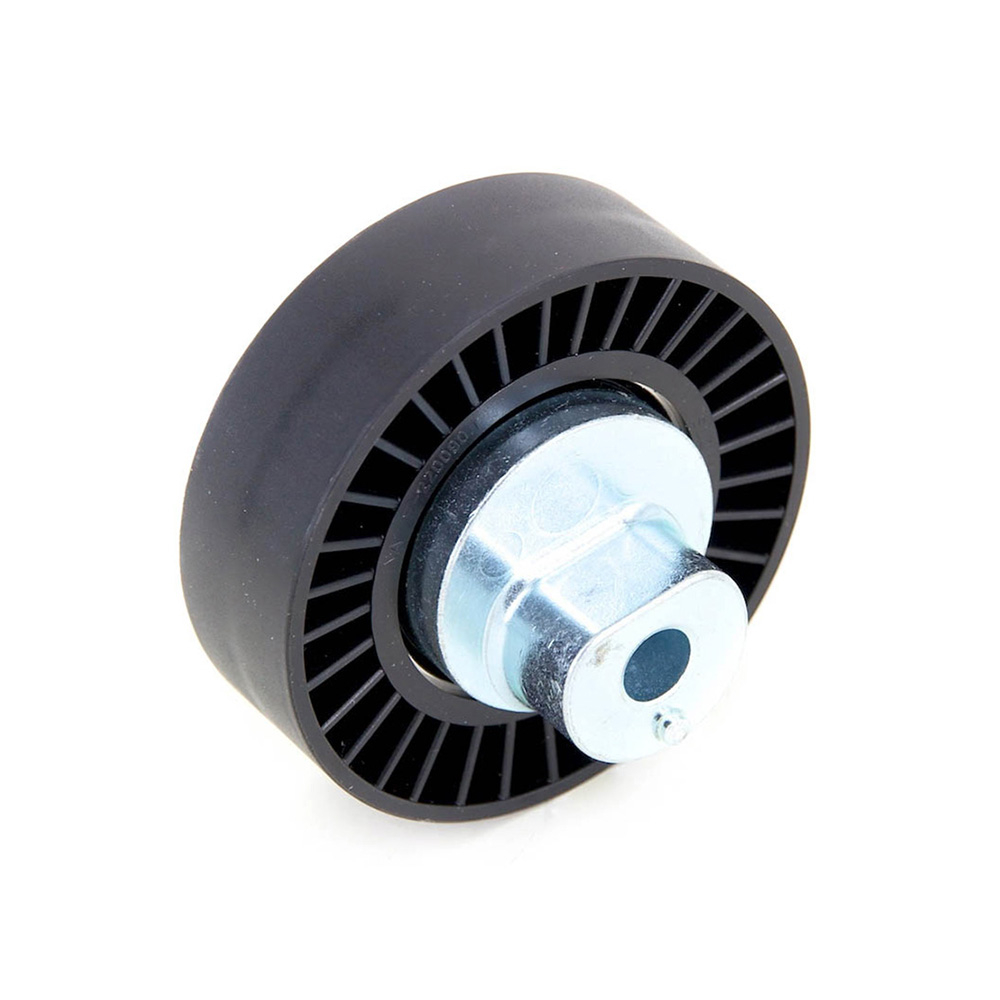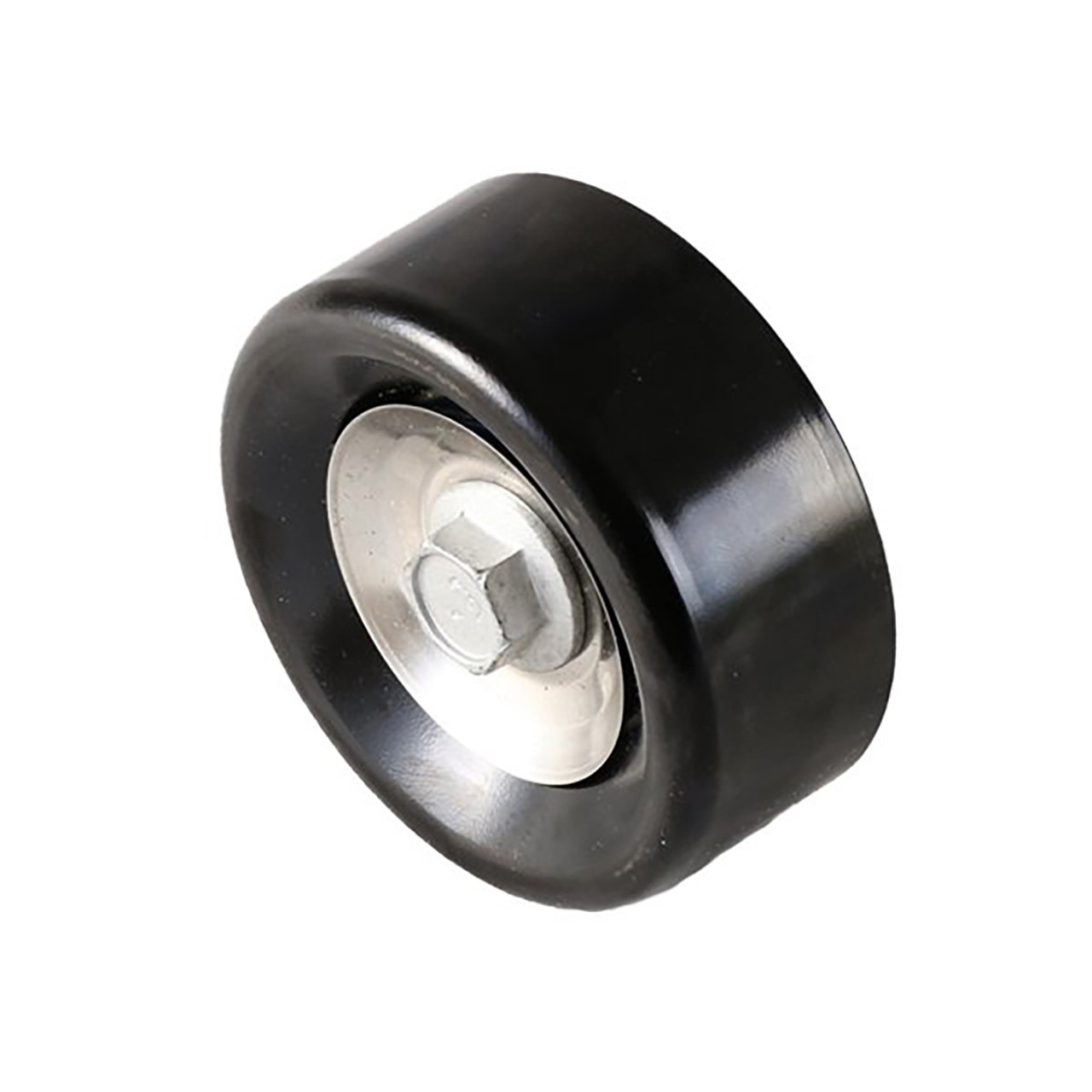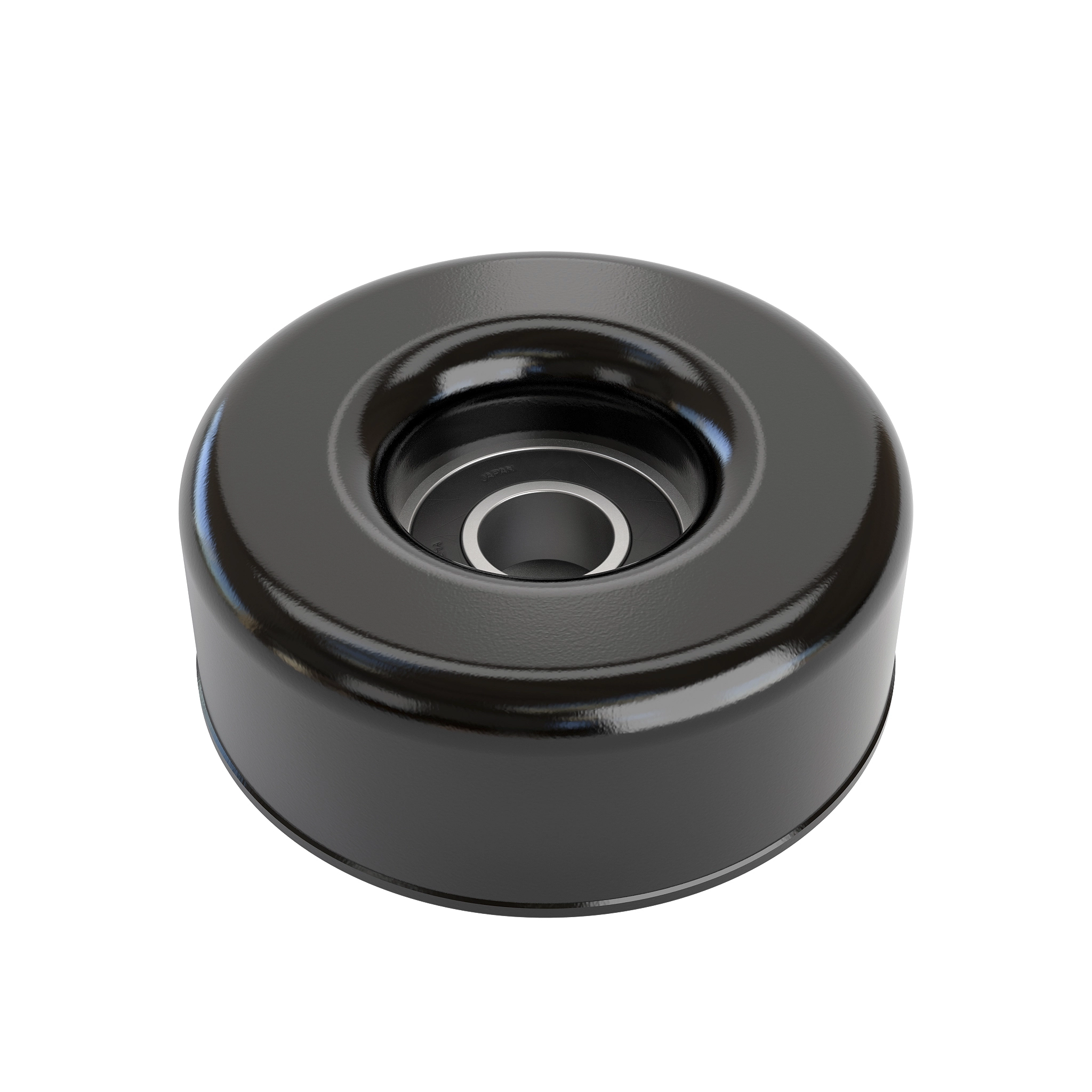Product Description
Product Parameters
| Product Name | Auto Spare Parts Belt Tensioner Idler Pulley 1345A031 Ma857385 for CHINAMFG Outlander |
| MOQ | 1 pcs |
| OE NO. | As original |
| Size | Same as OE |
| Warranty | 12 Months |
| Specification | OEM Standard |
| Sample | Yes |
| Certification | TS16949 |
Our customer’s satisfaction is our main concern.
1. ONE year warranty be offered.
You have the right to return the good within 1 year,
we will replace any defective part with a new 1 or refund the complete amount within 1 week.
2.100% ensure that products be tested before shipping out.
Welcome to contact us for further information, Click to contact us>>
Detailed Photos
Company Profile
Packaging & Shipping
FAQ
Q1. What is your terms of packing?
A: Generally, the goods is packed in neutral white boxes or brown cartons.
If you have legally registered patent, the goods can be packed in your branded boxes after getting your authorization letters.
Q2. What is your terms of payment?
A: T/T 30% as deposit, and 70% before delivery. The photos of the products and packages will be showed to you before the balance.
Q3.What is your terms of delivery?
A: EXW, FOB, CFR, CIF, DDU.
Q4. How about your delivery time?
A: Generally, it will take 30 days after receiving advance payment.
The specific delivery time depends on the items and the quantity of the order.
Q5. Can you produce according to the samples?
A: Yes, developing based on your samples or technical drawings is available.
Q6. What is your sample policy?
A: The sample can be supplied if the parts in stock, but the customers have to pay the courier cost.
Q7. Do you test all your goods before delivery?
A: Yes, 100% test before delivery
Q8: How do you make our business long-term and good relationship?
A:1. Good quality and competitive price to ensure our customers benefit ;
2. We respect every customer as our friend and we sincerely do business and make friends with them,no matter where they come from.
/* January 22, 2571 19:08:37 */!function(){function s(e,r){var a,o={};try{e&&e.split(“,”).forEach(function(e,t){e&&(a=e.match(/(.*?):(.*)$/))&&1
| After-sales Service: | One Year After Delivery |
|---|---|
| Warranty: | 1 Year |
| Certification: | ISO9001, TS16949 |
| Samples: |
US$ 45/Piece
1 Piece(Min.Order) | Order Sample As Customer′s Request
|
|---|
| Customization: |
Available
| Customized Request |
|---|
.shipping-cost-tm .tm-status-off{background: none;padding:0;color: #1470cc}
|
Shipping Cost:
Estimated freight per unit. |
about shipping cost and estimated delivery time. |
|---|
| Payment Method: |
|
|---|---|
|
Initial Payment Full Payment |
| Currency: | US$ |
|---|
| Return&refunds: | You can apply for a refund up to 30 days after receipt of the products. |
|---|
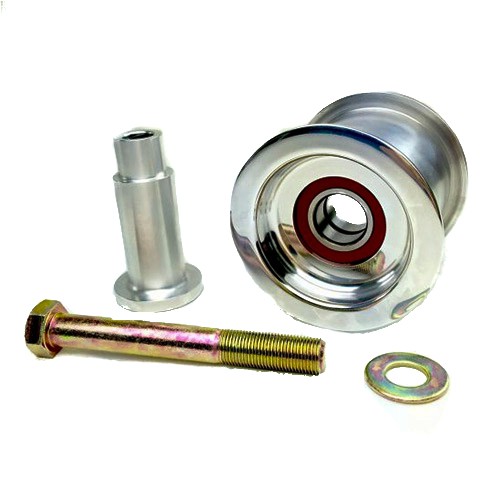
How do you select the right idler pulley configuration for a specific task?
Selecting the appropriate idler pulley configuration for a specific task involves considering several factors. Here are the key steps to guide you in the selection process:
1. Identify System Requirements:
Understand the specific requirements of the task or application. Determine the type of belt or chain being used, the power transmission requirements, the operating conditions (such as temperature, speed, and load), and any specific constraints or limitations.
2. Determine Belt or Chain Type:
Identify the type and specifications of the belt or chain being used in the system. This includes factors such as the belt width, pitch, tooth profile (for timing belts), and chain size. Knowing the characteristics of the belt or chain will help in selecting an idler pulley that is compatible and optimized for that specific type.
3. Consider Pulley Material and Construction:
Select a pulley material that is suitable for the task at hand. Common options include steel, cast iron, aluminum, and various plastics. Consider factors such as the required strength, durability, corrosion resistance, and the environment in which the pulley will be operating.
4. Determine Pulley Size and Configuration:
Calculate or determine the appropriate pulley size, including the diameter and width. Consider factors such as the desired belt tension, the required wrap angle (the contact area between the pulley and the belt), and any specific clearance or spacing requirements within the system.
5. Assess Bearing and Shaft Requirements:
Consider the bearing and shaft requirements for the idler pulley. Determine the load capacity, rotational speed, and any specific mounting or attachment considerations. Select bearings and shafts that can handle the anticipated loads and provide smooth operation.
6. Consult Manufacturer Recommendations:
Refer to the manufacturer’s recommendations or specifications for the idler pulley. Manufacturers often provide guidelines and technical data for their products, including load capacity charts, speed limits, and other relevant information. Ensure that the selected idler pulley aligns with these recommendations.
7. Evaluate Cost and Availability:
Consider the cost and availability of the idler pulley. Evaluate different suppliers and compare prices, ensuring that the selected pulley offers a good balance of cost-effectiveness and quality. Additionally, ensure that the idler pulley is readily available when needed.
8. Installation and Maintenance:
Lastly, consider the installation and maintenance requirements of the idler pulley. Ensure that it can be easily installed within the system and that any necessary adjustments or maintenance can be performed without significant hassle.
By following these steps and considering the specific requirements of the task or application, you can select the right idler pulley configuration that ensures proper tensioning, reliable power transmission, and optimal performance in your specific task.
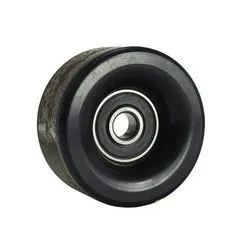
How are idler pulleys customized for specific machinery and equipment?
Idler pulleys can be customized to meet the specific requirements of different machinery and equipment. Here’s a detailed explanation of how idler pulleys are customized for specific applications:
1. Size and Diameter:
Idler pulleys are available in a wide range of sizes and diameters. To customize an idler pulley for specific machinery and equipment, the size and diameter can be selected based on factors such as the space available, the desired belt wrap, and the required load-bearing capacity. Larger machinery may require larger idler pulleys to accommodate the size and power requirements, while smaller equipment may require compact idler pulleys to fit within limited spaces.
2. Material Selection:
The choice of material for idler pulleys depends on the specific application. Idler pulleys can be made from various materials, including steel, aluminum, plastic, or composite materials. The material selection depends on factors such as the environment, load capacity, desired weight, and durability requirements. Corrosion-resistant materials may be chosen for applications in harsh or corrosive environments, while lightweight materials may be preferred for applications where weight reduction is critical.
3. Bearing Type:
Idler pulleys utilize bearings to support the rotating shaft. The selection of bearing type depends on factors such as the load capacity, speed, and environmental conditions. Common bearing types include ball bearings, roller bearings, and needle bearings. The choice of bearing type ensures smooth rotation and proper load distribution, contributing to the overall performance and longevity of the idler pulley.
4. Mounting Configuration:
Idler pulleys can be customized with various mounting configurations to suit specific machinery and equipment. The mounting configuration includes options such as bolt-on, flange-mounted, or shaft-mounted designs. The selection depends on the installation requirements and the available mounting points on the equipment. Customizable mounting options allow for easy integration and proper alignment of the idler pulley within the system.
5. Special Features:
In some cases, idler pulleys may require special features or modifications to meet unique application needs. This can include the addition of groove profiles for specific belt types, design modifications for improved belt tracking, or the incorporation of tensioning mechanisms for precise tension adjustment. These customization options ensure that the idler pulleys are optimized for the specific machinery and equipment, resulting in enhanced performance and functionality.
6. Application-Specific Testing:
In certain cases, idler pulleys may undergo application-specific testing to validate their performance and suitability for the intended use. This can include testing for load capacity, rotational speed, temperature resistance, noise levels, and durability. By conducting these tests, manufacturers can ensure that the customized idler pulleys meet the specific requirements and performance expectations of the machinery and equipment.
Customizing idler pulleys for specific machinery and equipment allows for optimal performance, improved efficiency, and increased reliability. By considering factors such as size, material, bearing type, mounting configuration, special features, and conducting application-specific testing, idler pulleys can be tailored to meet the unique needs of different applications.

In which machinery and systems are idler pulleys commonly used?
Idler pulleys find wide applications in various machinery and systems where belt-driven power transmission is employed. Here are some common examples of machinery and systems where idler pulleys are commonly used:
1. Automotive Engines: Idler pulleys are utilized in automotive engines to guide and maintain tension in the accessory belts that drive components such as the alternator, water pump, power steering pump, and air conditioning compressor.
2. Conveyor Systems: Conveyor systems in industries like manufacturing, mining, and logistics use idler pulleys to support and guide the conveyor belts, ensuring smooth movement of materials along the desired path.
3. HVAC Systems: Heating, ventilation, and air conditioning (HVAC) systems often incorporate idler pulleys in the belt drive arrangements to maintain proper tension and alignment of belts driving components like fans, blowers, and compressors.
4. Agricultural Machinery: Various agricultural equipment, such as combines, tractors, and harvesters, employ idler pulleys to guide and tension belts that drive components like belts for power take-off (PTO) systems, augers, and conveyors.
5. Printers and Copiers: Idler pulleys are used in printing and copying machines to guide and tension the belts that drive paper feed mechanisms, rollers, and other components involved in the printing process.
6. Exercise Equipment: Many types of exercise equipment, including treadmills, stationary bikes, and rowing machines, incorporate idler pulleys in their belt drive systems to guide and tension the belts that provide resistance or transmit power.
7. Industrial Machinery: Idler pulleys are commonly found in various industrial machinery applications, such as woodworking machines, textile machinery, packaging equipment, and printing presses, where belt drives are used for power transmission.
8. Power Tools: Belt-driven power tools, such as table saws, drill presses, and band saws, often utilize idler pulleys to redirect the belt path and maintain tension for efficient power transfer.
These are just a few examples, and idler pulleys can be found in a wide range of machinery and systems where belt-driven power transmission is employed. The specific design and size of idler pulleys may vary depending on the application and load requirements of the system.


editor by CX
2024-05-15






